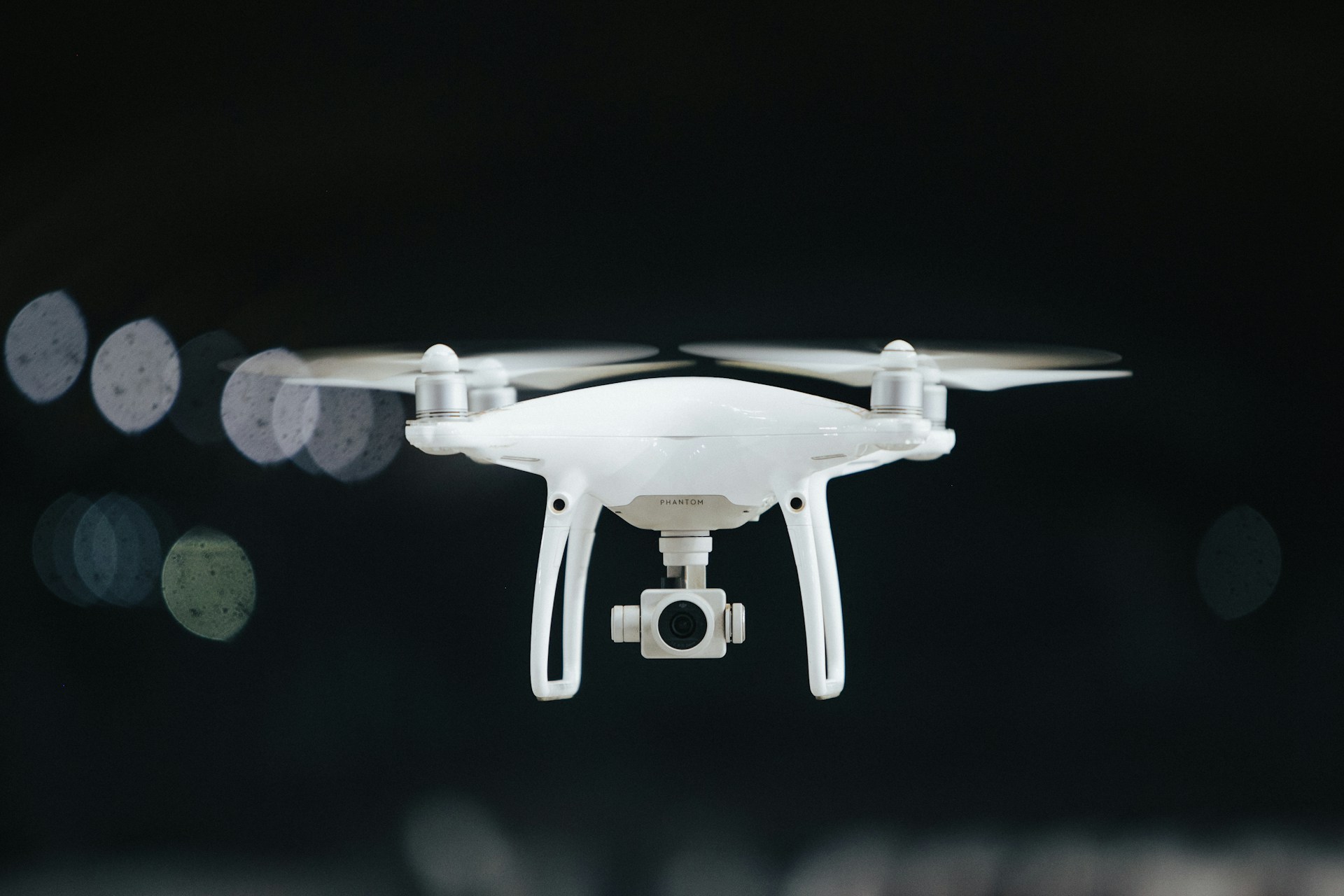Imagine a world where your online purchases whiz through the air, landing silently at your doorstep. This isn’t science fiction anymore. Delivery drones are rapidly becoming a reality, promising to revolutionize the way we receive our goods. Buckle up and explore the exciting (and slightly terrifying) potential of drone delivery.
Evolution of delivery methods
The evolution of delivery methods has undergone a significant transformation over the years. Initially, traditional shipping methods relied heavily on manual labor and transportation by land and sea. Merchants and traders would transport goods using horses, carts, and ships, often enduring long and arduous journeys to reach their destinations.
However, with advancements in technology and infrastructure, delivery methods began to modernize. The introduction of steam-powered ships and locomotives revolutionized long-distance transportation, allowing goods to be transported faster and more efficiently than ever before. This era marked the beginning of a shift towards mechanized transportation and paved the way for the development of modern shipping networks.
In recent decades, the rise of the internet and e-commerce has further transformed the delivery landscape. Traditional shipping methods have been supplemented by express delivery services and logistics companies, offering expedited shipping options to meet the growing demands of online shoppers. Additionally, the emergence of delivery drones and autonomous vehicles represents the next frontier in delivery technology, promising to revolutionize the way goods are transported and delivered to consumers worldwide.
Advantages of delivery drones
The advantages of delivery drones are multifaceted, offering numerous benefits over traditional shipping methods. Here are some key advantages:
- Speed and Efficiency:
- Delivery drones can significantly reduce delivery times by bypassing traffic congestion and other logistical hurdles.
- They offer swift and expedited delivery options, allowing packages to reach their destination in a fraction of the time compared to traditional shipping methods.
- Cost-Effectiveness:
- Delivery drones eliminate the need for expensive infrastructure such as warehouses and delivery vehicles, reducing operational costs for shipping companies.
- They can operate autonomously or with minimal human intervention, further reducing labor expenses associated with traditional delivery methods.
- Environmental Impact:
- Unlike traditional shipping methods that rely on fossil fuels, delivery drones are environmentally friendly and emit zero carbon emissions during operation.
- They help reduce the carbon footprint of shipping companies and contribute to sustainability efforts by minimizing the use of non-renewable resources.
- Accessibility:
- Delivery drones can reach remote or hard-to-access areas where traditional delivery methods are impractical or cost-prohibitive.
- They offer a scalable solution for last-mile delivery, ensuring that even customers in rural or underserved areas can receive timely deliveries.
- Flexibility:
- Delivery drones are highly adaptable and can be deployed for various applications, including food delivery, medical supplies transportation, and package delivery.
- They can navigate through urban landscapes and rural areas with ease, offering a versatile solution for shipping companies and businesses alike.
Overall, delivery drones offer a plethora of advantages that make them a promising solution for the future of shipping. From faster delivery times to reduced costs and environmental benefits, their potential to transform the delivery landscape is undeniable.
Challenges facing delivery drones
| Challenges | Description | Mitigation Strategies |
| Regulations and Airspace Management | Lack of clear regulations governing the operation of delivery drones in populated areas. | Collaborate with regulatory authorities to establish guidelines for safe and responsible drone operations. Implement geofencing technology to restrict drone flights in prohibited areas. |
| Safety Concerns | Potential risks to public safety and property due to accidents or malfunctions during drone operations. | Implement robust safety protocols and fail-safe mechanisms to minimize the likelihood of accidents. |
| Weather Limitations | Adverse weather conditions such as high winds, rain, and snow can affect drone performance and reliability. | Utilize weather forecasting technology to plan drone operations and prioritize safety during inclement weather. |
- Regulations and Airspace Management: Delivery drones face regulatory challenges regarding their operation in populated areas. There’s a lack of clear guidelines governing their use, leading to uncertainty and potential conflicts with existing airspace regulations. Collaborating with regulatory authorities to establish comprehensive guidelines and standards is crucial to ensure the safe integration of drones into the airspace.
- Safety Concerns: Safety remains a paramount concern for the widespread adoption of delivery drones. Accidents or malfunctions during drone operations pose risks to public safety and property. To mitigate these risks, it’s essential to implement robust safety protocols and fail-safe mechanisms.
- Weather Limitations: Adverse weather conditions such as high winds, rain, and snow can significantly impact drone performance and reliability. Flying drones in adverse weather conditions increases the risk of accidents and operational disruptions. Utilizing weather forecasting technology to plan drone operations and incorporating weather-resistant design features can help mitigate the impact of adverse weather on drone operations.
Despite these challenges, the potential of delivery drones to revolutionize the shipping industry remains undeniable. With ongoing advancements in technology and collaboration between stakeholders, many of these obstacles can be overcome. As regulatory frameworks evolve, safety protocols improve, and drone technology continues to mature, delivery drones are poised to become an integral part of the future of shipping, offering unprecedented speed, efficiency, and accessibility to consumers worldwide.
Current applications of delivery drones
Current applications of delivery drones span across various sectors, showcasing their versatility and potential impact:
Food Delivery
Delivery drones are being utilized by restaurants and food delivery services to transport meals directly to customers’ doorsteps. This innovative approach offers convenience and speed, particularly for urban areas with high demand for quick and contactless delivery options.
Medical Supplies Delivery
In the healthcare sector, delivery drones are playing a crucial role in transporting essential medical supplies to remote or hard-to-reach areas. From delivering vaccines and medications to transporting blood samples for analysis, drones are helping to improve healthcare access and outcomes, especially in regions with limited infrastructure or during emergencies.
Future prospects of delivery drones
Delivery drones represent a glimpse into the future of logistics and transportation, with exciting possibilities on the horizon. As technology continues to evolve and regulatory frameworks adapt to accommodate their integration into airspace, the potential applications of delivery drones are expanding rapidly.
- Urban Air Mobility: Delivery drones have the potential to revolutionize urban transportation by offering a scalable solution for transporting goods within densely populated cities.
- Last-Mile Delivery Solutions: Delivery drones offer a promising solution for last-mile delivery, particularly in remote or underserved areas where traditional delivery methods are inefficient or cost-prohibitive.
- Integration with Autonomous Vehicles: In the future, delivery drones could be integrated with autonomous ground vehicles to create a seamless delivery network.
- Drone Swarms: Advancements in drone technology are enabling the development of drone swarms, where multiple drones work together to accomplish complex tasks.
- Intercontinental Delivery: With advancements in long-range drone technology and battery life, delivery drones could potentially be used for intercontinental delivery.

